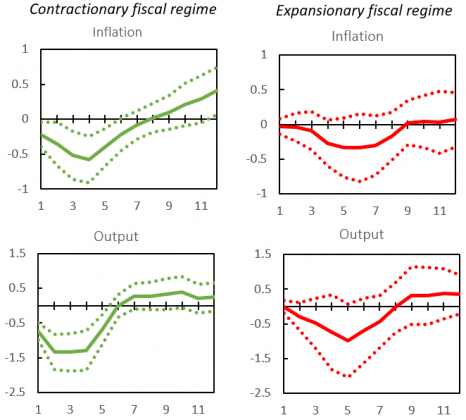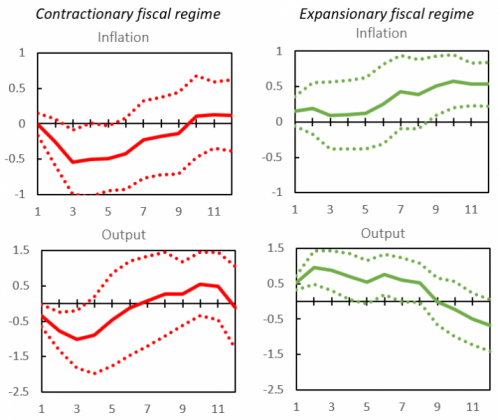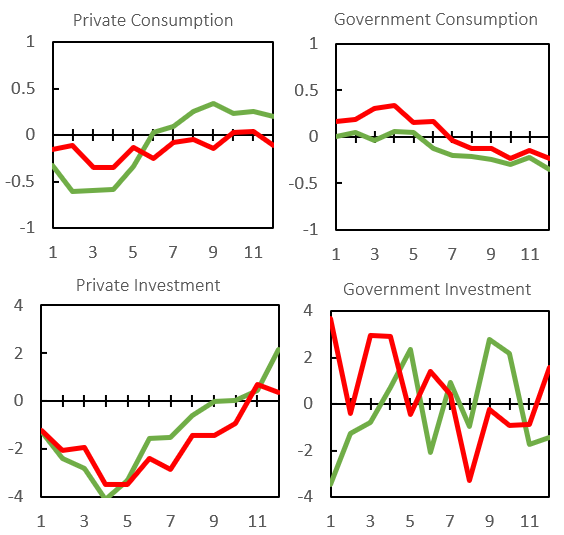References
Caramp, N. and Silva, D. H. (2022). Fiscal policy and the monetary transmission mechanism. Mimeo.
Corsetti, G., Dedola, L., Jarociński, M., Maćkowiak, B., & Schmidt, S. (2019). Macroeconomic stabilization, monetary-fiscal interactions, and Europe’s monetary union. European Journal of Political Economy, 57, 22-33.
Jarociński, M. and Karadi, P. (2020). Deconstructing monetary policy surprises— The role of information shocks. American Economic Journal: Macroeconomics, 12(2):1–43.
Jordà, Ò. (2005). Estimation and inference of impulse responses by local projections. American Economic Review, 95(1):161–182.
Kloosterman, R., Bonam, D. and van der Veer, K. (2022). The Effects of Monetary Policy across Fiscal Regimes. De Nederlandsche Bank Working Paper No. 755.
Reichlin, L., Ricco, G., and Tarbé, M. (2023). Monetary-fiscal crosswinds in the European Monetary Union. European Economic Review, 151: 104328.
Schnabel, I. (2022). Finding the right mix: monetary-fiscal interaction at times of high inflation. Keynote speech by Isabel Schnabel, Member of the Executive Board of the ECB, at the Bank of England Watchers’ Conference.








